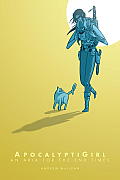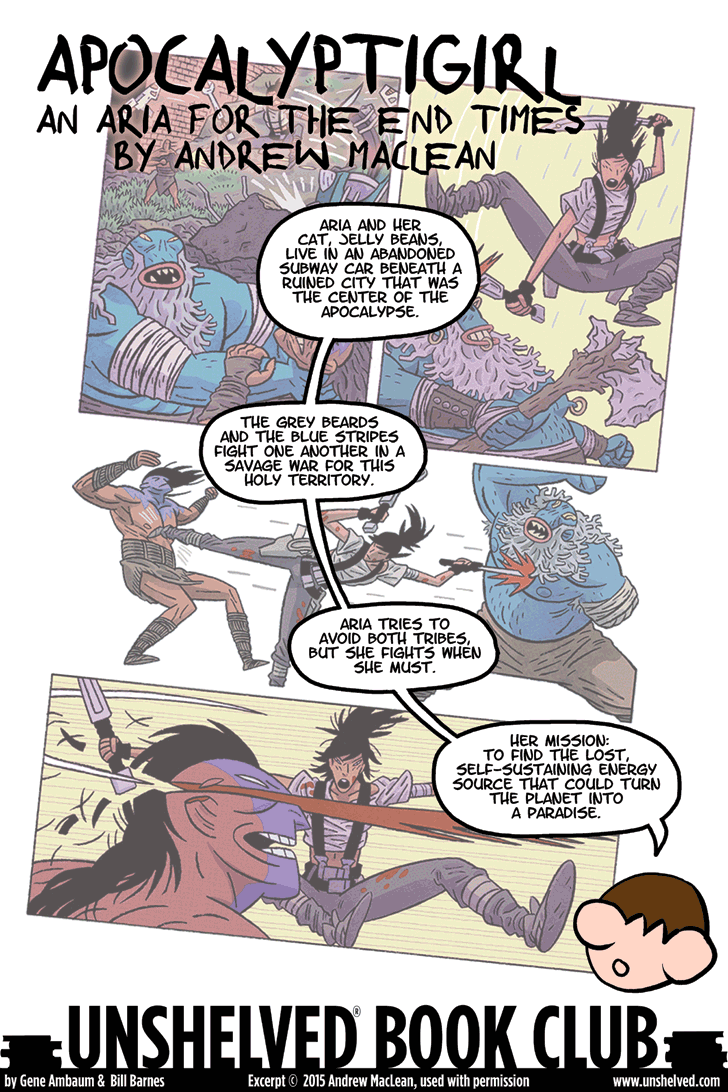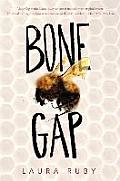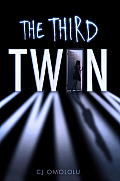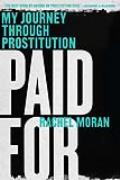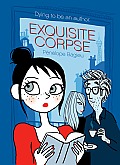Link to this review in the form of a comic strip by geneambaum tagged graphic novel • science fiction
Link to this review by dawnrutherford tagged coming of age • mystery
When Finn was fifteen years old, his mother decided she was done parenting and took off to be with an orthodontist she met online. His brother Sean was just about to go off to college, but instead got a job as a paramedic and stayed on to raise Finn. They were alone, eating from cans and making do, until Roza came along. Finn found her hiding in the barn one morning, terrified and wearing one shoe. She was too scared to talk, but took a key to the empty upstairs apartment when the brothers offered it.
They were just beginning to become a sort of family together when she disappeared. Finn was the only witness, but says he cannot describe the face of the man who took her. Sean and the rest of the town believe Finn is just protecting Sean’s feelings because another woman has abandoned them.
Why I picked it up: I love the fierce-looking bee on the cover, its wings dripping with sweetness, its stinger extended like a sabre. Plus there is a blurb from E. Lockhart on the jacket praising this as exceptional magical realism, and I was curious to know what part bees played in that.
Why I finished it: Bone Gap is exactly the sort of small town that I often think of moving to — it has the comfort of everyone knowing and keeping an eye out for their neighbors. But that also means everyone noses into each other’s business. Gossip is the fastest news source, and one misinterpreted incident can ruin a reputation. Just as everyone has secrets that define them, so does the town itself, most notable of which is that it is located over a passage to the world of the dead.
Readalikes: For readers who enjoyed the perspective of autistic teen detective Christopher John Francis Boone in Mark Haddon’s Curious Incident of the Dog in the Night-Time, Finn’s prosopagnosia provides an interesting twist, complicating his quest to find Roza and bring Sean back from his emotional self-exile. His face-blindness also makes things difficult as Finn tries to woo the self-doubting beekeeper next door.
Link to this review by darcy tagged mystery • coming of age
When they were young girls, Lexi and her identical twin Ava made up a third sister they called Alicia. Alicia was always to blame when they did something naughty. Out of boredom, they resurrect Alicia and it becomes a game to see just how many guys they can date while pretending to be her. Alicia is bold and not afraid of anything.
The problem is, a boy ends up dead and all evidence points to Alicia.
Why I picked it up: I was intrigued by the title. As a kid I always wanted a twin to blame things on, and the idea of a secret sister shared between twins really caught my attention.
Why I finished it: It was a great mystery. Lexi is starting to think that maybe they should pull back and stop pretending to be Alicia, but agrees to go on a date with a guy that Ava has already met as Alicia. She dresses in the Alicia clothes but when she meets him, he attacks her. She fights him off and gets away, but he ends up dead — murdered in the parking lot where she ran away from him. Later, a second boy is murdered and Lexi and Ava are worried that the killer will attack again and that they will be blamed.
It’s perfect for: Michelle, a childhood friend. She used to paw through the school library with me at lunchtime to read Lois Duncan books like Stranger with my Face and I Know What You Did Last Summer. She’d love how the photographic and DNA evidence mounts against Lexi and Ava while the real killer is still on the loose.
Link to this review by flemtastic tagged biography • nonfiction
At fourteen, Rachel Moran left home to live on the streets because of her mentally unstable parents. She had no one else to turn to, and her older boyfriend soon convinced her that selling herself on the street was the only way they could make it financially. She later began to work as a call girl because it was safer. She stopped working as a prostitute after seven years, when her first short story was accepted by a magazine.
Moran is smothered in shame, as she says is the case for every woman forced into prostitution. Writing the book has been part of her therapy. As the publication date drew closer, she carefully considered whether or not to use a pen name, but finally decided that for the sake of authenticity, she couldn’t. There is no doubt this is an extremely personal book. Moran even goes so far as to detail her feelings and experiences during her first day on the job, right down to her first John’s spectacles and bald head — every memory of that first experience is permanently burned into her memory. Throughout she talks about the men who paid her for sex. She doesn’t let the few nice ones off the hook, discussing how they chose to be “willfully oblivious” to the shame and sexual abuse they were heaping on a her.
Why I picked it up: I’ve always liked books that claim to give the inside scoop on what it is like to work in different jobs. I haven’t had any interaction with the world of prostitution, but I believe that popular media, including movies like Pretty Woman, have skewed how society perceives it.
Why I finished it: Wow! This is the most clear-eyed book on prostitution I have ever read, from a woman who experienced it and came out the other side. Moran systematically and categorically lays out and then destroys several myths, like that women who work in the sex trades are empowered (not true — they do not control many aspects of where, when, how, etc.), and that there are “nice or gentle transactions” (Moran shows that violence is inherent in every transaction). She is unbelievably clear and fair, including evaluating her own actions and how she justified her behavior. She says the myth of the “Happy Hooker” who enjoys the money, hours, parties, and lifestyle is an absolute farce; she has never met a prostitute who would fit that description. She is brutally honest about how she felt. At fifteen, she saw a group of girls from her old high school pass her on the road where she was streetwalking. She felt like school was worlds away, like she didn’t even deserve to be there anymore, and that if she returned, everyone in the room would immediately know what she had been doing.
It’s perfect for: My friend Derek, who has sparred with me before about drug legalization and sex-work decriminalization. Moran takes a large chunk of time at the end of the book to discuss efforts around the world to deal with prostitution. She believes countries like Sweden and Iceland are doing well — they are attacking all aspects of prostitution, especially pimps, traffickers, and sex purchasers. She also discusses countries that are headed in the wrong directing like her home country, Ireland, which has criminalized selling sex, but not buying it, and both Germany and Australia, where it has been legalized and is increasing.
Link to this review by wally tagged nonfiction
Using a mix of photos, drawings, charts and text the authors show how the Internet is changing our sense of time and degrading our sense of narrative.
Life is becoming a series of very brief instances.
Why I picked it up: It was advertised in this issue of the Unshelved Book Club and the text cited Marshall McLuhan.
Why I finished it: It’s very short and easy to read. The ideas are thought-provoking, like how we used to have a few memes a year and now face hundreds a day. What does that do to our sense of meaning? (The authors don’t explain things or draw conclusions based on research the way someone like Malcolm Gladwell might, but instead move from one idea to the next.)
I enjoyed the many neologisms and their definitions, like “smupid” which is the feeling of being smart and stupid at the same time. It is in contrast to “stuart,” which is being stupid and smart at the same time. Yes, there is a difference.
It’s perfect for: Josh, who has a deeply skeptical view of Marshall McLuhan for his use of contradictions, false facts, and reductionism, and who would bring his wits to bear on this book mercilessly. He might criticize its breezy tone, but he’d have trouble disagreeing with some of these ideas, like how the Internet is affecting political parties.
Link to this review by geneambaum tagged chapter book • fantasy • humor
Princess Harriet Hamsterbone is brave and smart, plus great at checkers and fractions. Her parents want her to learn to behave like a princess, but she really wants to go slay monsters. When she’s ten, her parents explain why they’re so overprotective (and why her life is so boring): at her christening, she was cursed by a wicked fairy god-mouse. On her twelfth birthday, she’ll prick her finger on a hamster wheel and fall into a death-like sleep.
Rather than being depressed by this unthwartable curse, Harriet is elated. If that will happen when she’s twelve, she’s invincible until then. She leaps from the highest tower into the moat (she’s unhurt), then sets off for two years of cliff-diving, monster fighting, and jousting.
Why I picked it up: Couldn’t resist a cover with so much glitter on it. And I love Vernon’s Digger and Dragonbreath books.
Why I finished it: It’s hilarious, from Harriet’s ferocious riding quail, Mumfrey, to the bits that were put in there to make adults laugh. My favorite is when Harriet is confronting a “vicious” ogrecat more interested in soy and kale than eating people. He does cop to eating a nonstick cookware salesman, but that was years ago. He also has a cookbook called To Serve Man-Flavored Substitute.
And when Harriet turns twelve and has to face her fate (and the evil fairy god-mouse), she’s totally heroic.
Readalikes: My other favorite illustrated re-telling of a fairy tale with a kick-butt heroine, Rapunzel’s Revenge.
Link to this review by geneambaum tagged graphic novel
Zoe works as a booth babe at trade shows, but she hates her job. Life at home with her boyfriend isn’t good, either. She feels like she deserves better, even though she isn’t doing anything to improve her circumstances.
While she’s eating lunch in a park a man keeps peering at her from behind his curtains. She buzzes his apartment because she needs to use a bathroom. He suspects that she’s a member of the press because he is Thomas Rocher, a famous author. Zoe has never heard of him. As she’s leaving, he invites her back. They strike up a relationship that slowly turns romantic, and Rocher becomes convinced that he can’t write without her.
Why I picked it up: The cover art had an attractive, simple style.
Why I finished it: Rocher is a shut-in. He just seems eccentric at first, as if he’s afraid of going outside, but it becomes clear that there’s a mystery as to why he can’t leave his apartment. Finding out what’s going on pulled me in, and, after the reason is revealed, I had to see how it and his obsession with his writing would either help or hurt Zoe.
Readalikes: The color in this book is beautiful. There’s very little shading and few gradients or textures, but it works in an amazing way, often making Zoe pop off the page when she’s feeling great. (My favorite scenes are when she’s in a bookstore in her red hoodie, shopping.) Another book I love for its colors is the beautiful Superman: For All Seasons which was colored by Bjarne Hansen.
